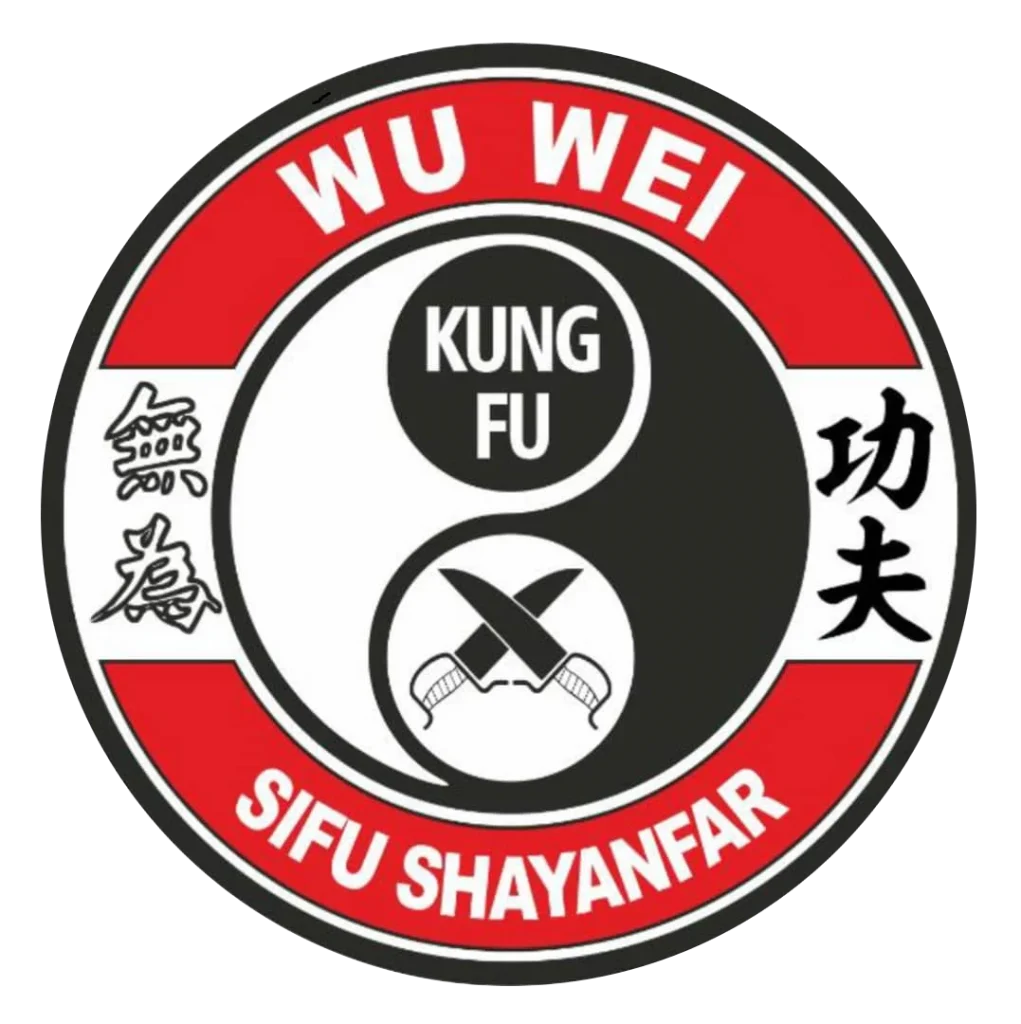فلسفه پیدایش آدمک چوبی
The Philosophy Behind the Origin of the Wooden Dummy
木人樁起源哲學
مقدمه / Introduction / 介绍
آدمک چوبی یا «木人樁» ابزاری اساسی در هنرهای رزمی چینی است که نقش کلیدی در تمرین ساختار، تکنیک و فلسفه رزمی دارد. تلفظ این عبارت در زبان چینی به دو صورت رایج است:
-
تلفظ استاندارد مندرین: Mùrén Zhuāng
-
تلفظ کانتونی (که در هنرهای رزمی جنوب چین مرسوم است): Mook Yan Jong
این ابزار فراتر از یک وسیله تمرینی، حامل انتقال دانش فلسفی، اخلاقی و تکنیکی هنر رزمی است.
The wooden dummy, known as “木人樁”, is a fundamental tool in Chinese martial arts, playing a key role in practicing structure, technique, and martial philosophy. This term is commonly pronounced in two ways:
-
Standard Mandarin pronunciation: Mùrén Zhuāng
-
Cantonese pronunciation (common in southern Chinese martial arts): Mook Yan Jong
This tool is more than just a training device; it conveys philosophical, ethical, and technical knowledge of martial arts.
木人樁是中國武術中的基本工具,對練習結構、技術和武術哲學至關重要。此詞有兩種常見讀法:
-
標準普通話:Mùrén Zhuāng
-
廣東話(南方武術常用):Mook Yan Jong
這個工具不僅是訓練器材,更承載武術的哲學、倫理與技術傳承。
بخش اول: ریشههای تاریخی و اسطورهای
Part 1: Historical and Mythical Roots
第一部分:歷史與神話起源
در افسانههای چینی گفته میشود معبد شائولین تونلی داشت که در آن ۱۰۸ آدمک چوبی قرار داشت تا شاگردان مهارتهای مختلف رزمی را تمرین کنند. پس از نابودی معبد، راهبهای به نام نگ موئی (Ng Mui) تنها بازمانده بود که این آدمکها را در یک مدل واحد ترکیب کرد.
Chinese legends tell of the Shaolin Temple having a tunnel with 108 wooden dummies where disciples practiced various martial skills. After the temple’s destruction, a nun named Ng Mui was the sole survivor who combined these dummies into a single model.
中國傳說,少林寺曾有一條隧道,裡面有108個木人樁供弟子練習各種武藝。寺廟被毀後,尼姑吳梅(Ng Mui)成為唯一倖存者,她將這些木人樁合併為一個單一模型。
بخش دوم: تحولات عملی و استانداردسازی
Part 2: Practical Evolution and Standardization
第二部分:實踐的演變與標準化
استاد ییپ من در هنگکنگ با بهبود طراحی آدمک چوبی، آن را به یک مدل دیواری با دو بازوی ارتجاعی تبدیل کرد. این نوآوری به تمرینکنندگان امکان داد تا حس نیرو و مقاومت واقعیتر و همچنین حرکات دقیقتر را تجربه کنند.
Master Yip Man in Hong Kong improved the wooden dummy design by creating a wall-mounted model with two springy arms. This innovation allowed practitioners to experience more realistic force and resistance, as well as execute more precise movements.
葉問大師在香港改良了木人樁,設計成壁掛模型並加裝兩根彈簧手臂。此創新讓練習者能感受到更真實的力量與阻力,並能執行更精確的動作。
بخش سوم: نقش سیستم وو وی کونگ فو و نوآوریهای سیفو شایان فر
Part 3: Role of Wu Wei Kung Fu System and Innovations by Sifu Shayan Far
第三部分:無為功夫系統與師傅Shayan Far的創新
در سیستم وو وی کونگ فو، سی فو شایان فر به همراه تیم همراهش نوآوری و نبوغ خاصی در تمرین با آدمک چوبی ارائه دادهاند که در نوع خود و در دنیای هنرهای رزمی چینی زبانزد است. این نوآوریها نه تنها به بهبود تکنیکها و کارایی تمرین کمک کرده، بلکه فلسفه تمرینی را نیز غنیتر ساخته است.
سی فو شایان فر با کمال میل حاضر است این ابتکارات و دستاوردهای تیم خود را با سایر استادان نامآشنا و مشهور در سطح بینالمللی به اشتراک بگذارد تا دانش و هنرهای رزمی به بهترین شکل گسترش یابد.
In the Wu Wei Kung Fu system, Sifu Shayan Far and his team have introduced unique innovations and brilliance in wooden dummy training that are renowned within Chinese martial arts circles. These innovations have enhanced techniques and training efficiency, enriching the training philosophy as well.
Sifu Shayan Far gladly shares his team’s innovations and achievements with other distinguished and famous masters internationally to promote martial arts knowledge and excellence.
在無為功夫系統中,師傅Shayan Far及其團隊在木人樁訓練方面展現了獨特的創新與才華,這在華人武術界享有盛譽。這些創新不僅提升了技術和訓練效率,也豐富了訓練哲學。
師傅Shayan Far樂於將其團隊的創意與成就與國際知名武術大師分享,以促進武術知識與卓越的傳播。
بخش چهارم: فلسفه تمرین با آدمک چوبی
Part 4: The Philosophy of Training with the Wooden Dummy
第四部分:使用木人樁的訓練哲學
آدمک چوبی ابزاری برای تمرین حفظ خط مرکزی، هماهنگی دفاع و حمله، و تقویت حافظه عضلانی است. هدف اصلی آن آموزش ساختار صحیح بدن، دقت زاویهها و افزایش حساسیت لمس (Chi Sao) است، نه صرفاً افزایش قدرت بدنی.
The wooden dummy is a tool to practice maintaining the centerline, coordinating defense and attack, and strengthening muscle memory. Its main goal is to teach proper body structure, angle precision, and increase tactile sensitivity (Chi Sao), rather than merely building physical strength.
木人樁是用來練習保持中線、協調攻防、增強肌肉記憶的工具。它的主要目標是教授正確的身體結構、角度精確性和提升黐手的觸感敏銳度,而不僅僅是增強體力。
بخش پنجم: نمادگرایی و میراث فرهنگی
Part 5: Symbolism and Cultural Heritage
第五部分:象徵意義與文化傳承
آدمک چوبی نمادی از میراث استادان هنرهای رزمی چین است و نشاندهنده پیوستگی دانش، اخلاق و تکنیک از نسلی به نسل دیگر میباشد. تمرین با این ابزار، نه فقط آموزش رزمی بلکه انتقال یک فلسفه زندگی و احترام به سنتها است.
The wooden dummy symbolizes the heritage of Chinese martial arts masters, representing the continuity of knowledge, ethics, and techniques passed down through generations. Training with this tool is not only martial instruction but also the transmission of a life philosophy and respect for traditions.
木人樁象徵中國武術大師的傳承,代表代代相傳的知識、倫理與技術的延續。使用此工具的訓練不僅是武術教學,更是生活哲學與尊重傳統的傳承。
نتیجهگیری / Conclusion / 結論
آدمک چوبی بیش از یک ابزار تمرینی، حامل فلسفهای عمیق درباره ساختار، حرکت و اخلاق رزمی است. این فلسفه از دل تاریخ، اسطوره و تجربه استادان بزرگ شکل گرفته و امروزه به عنوان یکی از پایههای آموزش هنرهای رزمی چینی در سراسر جهان شناخته میشود.
The wooden dummy is more than a training tool; it carries a deep philosophy about structure, movement, and martial ethics. This philosophy has emerged from history, myth, and the experience of great masters and is now recognized worldwide as a foundational element of Chinese martial arts training.
木人樁不僅是一種訓練工具,更承載著關於結構、動作和武術倫理的深刻哲學。這一哲學源自歷史、神話和大師的經驗,如今被全球認可為中國武術訓練的基礎。
